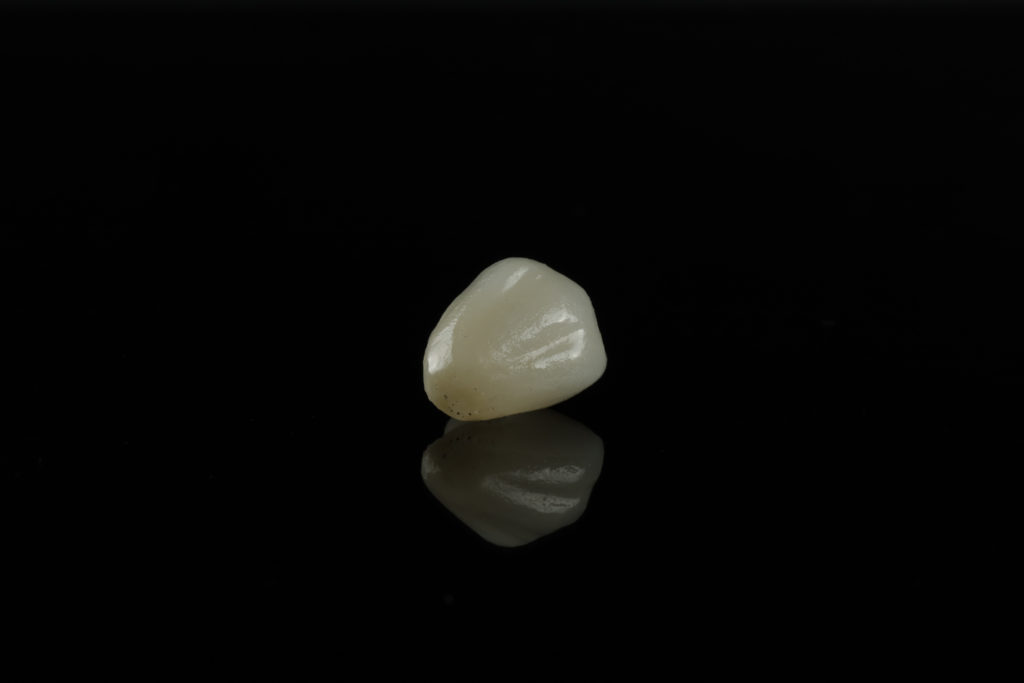
Ever stared at your teeth in the mirror for long? Chances are you’ve noticed grooves on your teeth. These vertical lines—called craze lines—might appear like small, hairline cracks on your tooth enamel. Some might wonder if this is the beginning stages of a cracked tooth or whether it’s a result of long-term wear and tear. But while they can be caused by wear over time, they’re harmless for the most part. But what are craze lines? And can craze lines heal?
In a nutshell, they are small cracks caused by your day-to-day activities. Eating, in particular. Over time, the forces you exert when you chew and bite into foods can generate those grooves in your teeth. What are craze lines, then, but a natural consequence of your eating habits?
But while they shouldn’t pose a problem in general, some might still worry about how these grooves might look and whether they can lead to a cracked tooth over time. But by understanding what are craze lines, we can eventually find a solution for craze lines on teeth.
So, what are craze lines? And can craze lines heal? Let’s find out.
Craze Lines Are an Inevitable Consequence of Eating
When you think about grinding your teeth, you might think of the harmful type—bruxism. And this type of tooth grinding does have its share of oral health consequences. When you grind your teeth in this way, you make your teeth prone to tooth enamel wear, which predisposes your pearly whites to other issues. These problems include craze lines, cracked teeth, and susceptibility to tooth decay.
But when we focus too much on bruxism, we might forget how essential grinding your teeth can be when it comes to eating. While bruxism, without a doubt, is harmful to your oral health, chewing your food plays an essential role in getting the necessary nutrients. But much like any friction, they can still make a mark on your tooth enamel. And as you grow, you might find them growing all-the-more prominent with age.
But there are other ways these lines form. For one, if you use your teeth to rip open objects, you might be more prone to getting them than those who don’t.
Nail-biting Also Increases Your Risk
Onychophagia, or nail-biting, is often done during times of stress, anxiety, boredom, or excitement.
It is often considered stress-relieving. In fact, about 50 percent of children from 10- to 18-years-old engage in nail-biting. Considering the habit frequently stops by age 30, fewer individuals bite their nails later in life. Additionally, the habit of nail-biting is said to be an oral compulsive habit or a parafunctional activity of a body part.
You think biting your nails is only bad for your hands? Think again. Nail-biting can chip, crack, or break your teeth, causing damage to your smile and oral health. And, yes, biting your nails can also cause craze lines! It can additionally cause jaw problems, gingival injury, and malocclusion of the anterior teeth. Pinworms and bacteria buried on the nail’s surface can be transferred from the anus to the mouth that can lead to infection.
Tips for Stopping Nail Biting
Stopping a habit is not easy. However, with patience and determination, it can be done. Here’s what you can do to break the habit:
- Cut your nails short.
- Coat them with bitter-tasting nail polish.
- Wear gloves.
- Root your triggers.
- Keep your hands and mouth busy.
- Tap your dentist for help. A mouth guard may be useful in the prevention of nail-biting.
They’re Mostly Harmless—Until Your Dentist Says Otherwise, That is
Craze lines, for the most part, are seen as outer distortions of the tooth. That means they’re pretty superficial for the most part. But there are times when they might go a little too far and will need a little dental care.
If you find that your grooves seem to go in deeper than usual, something else might be afoot. And when coupled with signs of enamel decalcification, this could put a dent on your oral health. In any case when this happens, feel free to set an appointment with your dentist.
But can craze lines heal? Not really, unfortunately, since enamel cannot regenerate. But they can look better. Talk to your dentist about your options.
